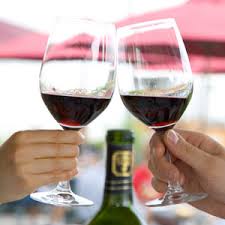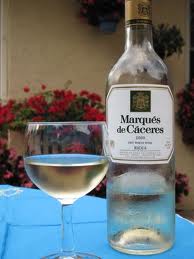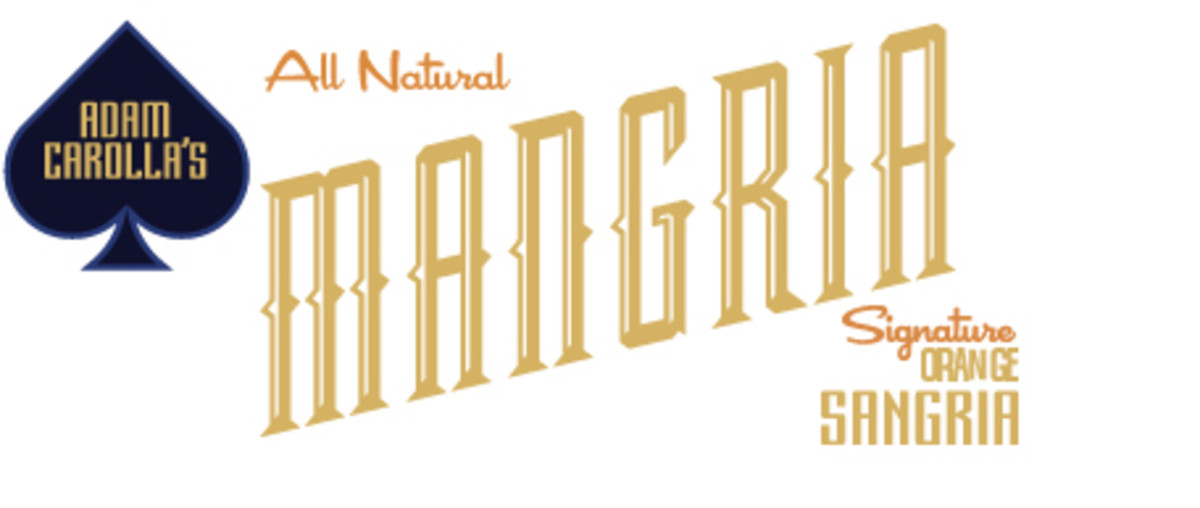Spanish Wines - La Rioja region




The History of Spanish wines
When you think of wine, vineyards, wine production, and wineries you may first think of the the regions of France, Italy and even California in the United States. Sipping wines in Bordeaux, France, the Chianti Mountains of Italy, or the Napa and Sonoma Valleys of California can bring subtle flavors, fruits and aromas to the tastebuds and nose and accompany foods so that their flavors are savored and remembered for a long time. But, have you ever thought about or tasted a Rioja wine from the Spanish vineyards and bodegas of the Rioja region in Spain?
Spain is western Europe's second-oldest wine producing country, beginning production between 1100 and 500 BC in the southern Andalucia region of Spain. Three thousand years later Spain is producing wines that are among the most modern in all Europe.
Wines in Spain were originally produced by the Phoenicians and later made and produced by the Greeks, who brought the vines to Spain when they were fleeing power struggles in the eastern Mediterranean Sea.
Later, the Romans arrived in 200 BC and vine growing in Spain turned from domestic to supplying their legions and the city of Rome itself with wines. This is how Spain's first real export market evolved.
In 711 AD when the Moors invaded Spain, the wine business ceased for several centuries under Muslim rule. By the 14th century, Spanish sherry became an important export item and sold in capitals all over Europe and is just as important today.
The next major change to Spanish wine came in the Rioja region in the 1850s when Bordeaux methods from France were first used in making Spanish red wine. In 1852 a Spanish nobleman, Luciano de Murrieta (later made a Marques) borrowed quality oak casks from Bordeau, France to create what is considered as the first "modern" Rioja wine.
Then, in 1856, nobleman Camillo Hurtado de Amegaga (also later made a Marques) looked to Bordeaux, France for inspiration in making his wines. He established a vineyard and Spain's first industrial scale bodega (winery) in 1860. His success in winemaking was because of the use of giant oak fermenting vats and expensive casks of French origin.
Then, in the 19th century the Spanish export market was boosted by the phylloxera disaster in France, a disease that hits grape vines, when many of the French vineyards were wiped out. France, then, looked to Spain for wine supplies.
From the 19th century to today, Spanish wines have grown in taste, quality and importance throughout the world. The wines from the Rioja region of Spain are the best wines produced in Spain today.



- Spanish Cavas - Spain's sparkling wines
In the northeast corner of Spain, in and around the city of Barcelona, is the wonderful cava region. Cava is champagne, but only those made in the champagne region in France are permitted to be called champagne. The rest made elsewhere in the world..
The Rioja Wine Region of Spain
La Rioja, the Rioja wine region of Spain, is located in northeast Spain south of the Cantabrian Mountains along the northwest section of the Ebro River. La Rioja is one of four of the most dynamic wine producing regions in Spain. Rioja is Spain's flagship wine and takes its name from the region. This region is also home of the Oja River (Rio Oja) and is believed to have given the region its name.
This region of Spain benefits from a continental climate. The mountains help to isolate the region which has a moderating effect on the climate. The mountains also protect the vineyards from the sometimes fierce northern winds that are typical of this part of Spain. Most of the region is situated on a plateau. Part of the region is located closer to the mountains and is slightly elevated and with a cooler climate.
Part of the region in the southeast experiences a drier and warmer climate. Many of the vineyards are found along the Ebro Valley between the towns of Haro and Alfaro and experience an annual rainfall of approximately twelve inches on average.
Therefore, the cold, wet Atlantic climate of the north meets the hot and arid Mediterranean climate of the south. The special characteristics of Rioja wines are the result of this specific location in Spain.
Even before the Romans arrived, the grapes for this easy drinking, fresh red wine were grown on freestanding bush vines and pressed by foot in stone troughs. This tradition remained for nearly two thousand years.
In the 1850s the introduction of new technology by Bordeaux pioneers included high-quality oak vats for fermenting and well-made casks fro again. This revolutionized the Rioja wine making because it brought out the complexity and longevity in what had been until then a simple country wine.
This was the start of Rioja as we know it today.
Since the 1980s Spain has made an enormous investment to maintain the integrity and high quality of this much sought after wine.
In 1991, Rioja was promoted to Denominacion de Origen Calificada (DOCa), a special higher grade of classification than just DO which is assigned only to wines that have shown consistent quality over many years.
Only seven grape varieties are permitted in Rioja wines and they come from three subregions:
- Rioja Alta - a northwestern Rioja region
- Rioja Alavesa - actually located in the Basque region
- Rioja Baja - a southeastern region
The Rioja Alta and Alavesa's vines are grown at up to 2,000 ft (600m) and share clay soils rich in chalk and iron. This is were the best Tempranillo and Graciano grapes are grown which are used to make the Rioja red wines.
Rioja Baja is in a lower part of the region about 1000 ft. (300m) which is hotter with alluvial soils and where the Carinena (Carignan or Manzuelo) and Garnacha (Grenache) grapes are grown.
The Rioja red wines are ripe with strawberry and raspberry Tempranillo fruit with a warm oaky note from the barrel aging in the winery.
There are four main types of Rioja wines:
- joven - young wines designed for early drinking with little or no maturation
- crianza - wines that spend at least six months in oak barrels and at least 18 months in the bottle before release
- reserva - wines that spend one year in oak barrels and a balance of three years in the bottle before release
- gran reserva - wines that spend eighteen months in oak barrels and a balance of five years in the bottle before release and are made of the finest vintages.
The Rioja region also produces white (blanco) and rose (rosado) wines. White wines are usually young and fresh and come from the Macabeo (locally known as Viura) grapes. Also a traditional oak styled white Rioja is made from a combination of Macabeo and Malvasia grapes. These wines can age many years and are something of an acquired tastes.
The traditional red Rioja is made from a blend of grapes from all three subregions. The character of each blend is dependent on a producer's particular house style. Rioja red wines are usually seventy percent Trempranillo grapes for freshness and fruit, twenty percent Garnacha grapes for weight and alcohol and ten percent a mix of Carinena grapes for color and warmth and Graciano grapes from finesse.
Rioja wines oaky, woody and earthy flavors come from the laborious process of barrel aging. Reservas can be aged anywhere from eight to ten years in oak barrels. Although aging in oak barrels comes from the French, in France today such lengthy aging is extremely rare. Then, the wine is kept in bottles in bodegas to continue the aging process and the wines are kept in the bottles until the wines have met their rigorous requirements.

Spanish wine laws
As of June 2003, Spain tightened up its existing regulation of its wines. Spanish wines are divided into "quality wines" which come from named areas under fairly strict regulations and "table" wines which is less regulated or virtually unregulated.
The quality wines are usually monitored by a consejo regulador who enforces specific viticultural and wine making and producing standards including regulation on grape varieties, maximum yields of the wine, specifications on the aging of wines and the information that must be given on the label. Stamps of the various consejos reguladores guarantee the wine's origin and are found on the label or the capsule.
Standards for each Denominancion de Origen (DO) are now overseen by an independent committee which has the power to regulate the production and quality of wine within each region.
- DO Pago is reserved for the finest wines from single estates with a consistent record for quality.
- DOCa are wines of consistently high quality and have proved they can maintain a quality for ten years.
- DO represents the wines produced from a designated regulador who enforces specific viticultural and wine making standards including regulations on grape varieties, maximum yields of a wine, specifications on aging and information must be given on the label. These wines can vary in quality, but should offer a style commensurate with their region.
- VCIG sinc 2003 have been high performing wines that can apply for promotion to DVO after a minimum of five years of consistency.
- VdIT are country wines and are less regulated than DO wines.
- VdM are your basic table wines and are prohibited from giving any indication of regional origins, grape variety or vintage on the label.




Spanish Cuisine and Rioja wines
Rioja wines are an integral part of Spanish culture and cuisine. The wines of Spain, so Spanish in their taste, are naturally the ideal accompaniment to the foods of Spain. Cocido Madrileno, Paella a la Valencia, Tortilla Espanola are a few examples of foods that taken with a Rioja wine are a perfect fusion of foods and grapes coming from the same Spanish soil. Since Rioja is produced in the tradition of Bordeaux wines of France, it is also good with a wide variety of other cuisines also.
Spanish cuisine has several basic characteristics that come from centuries by availability of ingredients. Spain's terrain is conducive to growing olive trees and grape vines and the raising of small animals, so the Spanish have developed a taste for eggs, pork, lamb and veal using olive oil as a cooking base and wine as the accompaniment to all meals.
Vegetables and fruits are eaten within season and according to the region. Fish is in abundance along the coastal regions and eaten quite frequently. Spaniards are fond of garlic, green and red peppers, and jamon serrano (cured ham) not only eaten as a tapas (appetiser) but is also incorporated into a wide variety of dishes.
Seafood and meat are often found in combination during a dinner. Ground almonds are found in soups, sauces and desserts. Paprika and garlic chorizo sausage is commonly eaten at Spanish tables and the golden spice saffron is added to many rice dishes, particularly paella, the national dish of Spain.
Spanish cooking is easy with its down to earth ingredients. The flavors of the dishes are mild and pleasing to most pallets. Even several tapas can make an easy and inexpensive meal. Each region of Spain has its own particular twist on the ingredients and how the foods are made, but are delicious, nonetheless, in each region.
Here are some examples of Spanish meals that can be paired with Rioja wines from Spain.
Rioja Dinner:
Mixed vegetables, Rioja style
Chicken with red peppers
Spicy potatoes
*Light red Rioja wine
Pears in wine sauce
Basque Dinner:
Stuffed Crab
Butterflied Porgy, Bilbao Style
Green beans and cured Ham
*Dry white Rioja wine
Fried custard squares
Castilian Dinner:
Tripe, Madrid style
Stewed Partridge
Peas with Cured Ham
*Full-bodied red Rioja wine
Sugar-coated fried bread
Andalucian Dinner:
Baked Eggs with Ham, Sausage, and Asparagus
Porgy baked in salt
*Dry white Rioja wine
Custard-filled Cake roll
Recipes for these different dishes can be found on-line or in any Spanish cookbook. When any of these foods are paired with a Rioja wine, the savoriness of the flavors comes to the pallet and the eating experience is a treasure.
Sources: Casas, Penelope. The Food and Wines of Spain. Alfred A. Knopf, Inc.: New York. 1982.
Keevil, Susan (consultant). Wines of the World. Metro Books: New York. 2010 edition.



Mallorca Restaurant in Cleveland, OH
I make several Spanish dishes that represent Spanish cuisine, but my favorite by far is paella valenciana, the national dish of Spain, that consists of rice cooked with saffron, chicken, shellfish, sausage, and peas. I make my own paella and I have another hub that gives a quick and easy recipe for paella to make at home. But, one of the fine restaurants in Cleveland, Mallorca, specializes in this great Spanish dish. I love to eat paella there along with a glass of Rioja wine.
The Mallorca Restaurant is located in the warehouse district of Cleveland on W. 9th Street and has been in business for about the past fifteen to twenty years. It has a menu of authentic Spanish cuisine and other international dishes and cuisine as well. It is an upscale restaurant with white linen table cloths and napkins and it is always a pleasure to eat there. This is where I come for great paella valenciana when in Cleveland and it is worth a trip to just for itself. I live forty to forty-five miles south of Cleveland in the Akron area when I'm in Ohio.
Along with my paella, I had a glass of white Rioja from the Marques Cacerces bodega in Spain. It is a light, golden, dry wine with a woody, oaky taste and is the perfect accompaniment for paella. White wine is supposed to be eaten with paella, but in the past I have also had red Rioja with paella and it is also good. I have to admit, though, the white Rioja tastes better with the paella.
Mallorca also serves mixed vegetables of cauliflower, broccoli, carrots and green beans done crunchy style in Spanish olive oil. And, a dish of homemade potato chips are also served. The chips are a favorite of the Spanish and are at every Spanish table which I have ever eaten. This was an especially good meal; however, the paella was a bit watery and runny this time. I like my paella cooked drier and this is usually how it is done at Mallorca. This must have been an off day for the cook.
After the meal, which I took home half the paella in a box, I ended my meal with just a cup of coffee with cream, sugar, and a complementary shot of amaretto which I put in my coffee. They have wonderful desserts: flan, chocolate cake, cheesecake to name just a few, but I was full from the meal and so no dessert for me.
This restaurant serves a fine selection of wines from all over the world, but they specialize in Spanish wines. I love Spanish wines from the Rioja region and this is where I go to have wine from this particular region of Spain. In my opinion, La Rioja is the best region in Spain that produces fine red and white wines of consistent quality. The reservas and the gran reservas, I believe are the best in the world.







